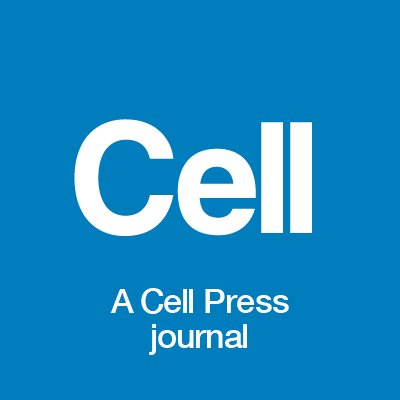
Jian Xu
@JianXuLab
Followers
3K
Following
4K
Media
63
Statuses
1K
We are a group of scientists & physicians passionate about #epigenetics #metabolism #genomics #leukemia #hematopoiesis #erythropoiesis #cancer #stemcells
USA
Joined February 2018
This discovery not only clarifies the mechanism behind approved gene therapies but also reveals that targeting a specialized RNA involved in this genome structure may offer a more accessible and cost-effective treatment for patients globally.
0
2
8
St. Jude and Northwestern University have uncovered how CRISPR-Cas9 gene therapy silences BCL11A in sickle cell disease and β-thalassemia. The therapy disrupts a 3D genome structure essential for BCL11A expression, reactivating fetal hemoglobin.
stjude.org
See how scientists identified a previously unknown treatment opportunity for sickle cell disease and β-thalassemia based on how CRISPR-based gene therapy works
2
1
11
Congratulations to Kaili Wang, Juan Wang, and co-authors. We are grateful for the fantastic collaborations with Mitch Weiss, Stuart Orkin, @zhou_jian, @yuefeng_1, and support from @NIDDKgov @StjudeResearch.
0
0
3
Moreover, we show that depletion of eRNAs using antisense oligonucleotides silences BCL11A and reactivates HbF in erythroid cells. These findings highlight a new therapeutic avenue for modulating BCL11A that could be more scalable and cost-effective than current gene therapy.
1
0
2
The BCL11A enhancers regulate chromatin architecture through two key functions: (1) TSS for eRNA production and (2) NIPBL–cohesin loading sites for chromatin loop formation. CRISPR editing disrupts both functions, leading to loss of epigenetic insulation and BCL11A silencing.
1
0
2
To understand how and why this occurs, we developed a long-read–based 3D chromatin assay. This revealed that the BCL11A locus is organized into higher-order chromatin structures, which we term “chromatin rosettes,” that collectively protect BCL11A from epigenetic silencing.
1
0
3
We now show that CRISPR editing of BCL11A enhancers, the basis of the first approved CRISPR gene therapy, causes epigenetic spreading of the repressive H3K27me3 across the BCL11A promoter and gene body in both erythroid cell lines and primary erythroid cells from SCD patients.
1
0
2
This study originated from work performed 15+ years ago that we did not understand back then – although BCL11A is expressed in erythroid cells driven by erythroid-specific enhancers, its gene locus is also surrounded by H3K27me3, a repressive histone mark deposited by EZH2.
1
0
2
Why did the first CRISPR gene therapy work so well in treating SCD and β-thalassemias? Our latest study provides the answer - CRISPR editing silences BCL11A through disruption of epigenetic insulation. https://t.co/z9HOHxk7yz
@JianXuLab @StJudeResearch @yuefeng_1 @NorthwesternU
ashpublications.org
Key Points. BCL11A, a key therapeutic target for hemoglobinopathies, is transcriptionally regulated by enhancer-dependent epigenetic insulation.Disrupting
9
14
50
A fantastic gathering of researchers at #EREHD25 😊💜 We are grateful for all the insightful talks, lively discussions, and new collaborations that emerged over these past few days! Rosie has truly loved working alongside Ting, Tao, Kate & Hui on this wonderful meeting
1
6
14
Michael @thechuan3 won the award without bringing the actual poster. The science must be good 🤣
0
0
7
Fantastic @Fusion_conf on retrotransposons #EREHD25 and redox #RedoxBio25 concluded with two “Best Poster Awards” to our own @thechuan3 @UTSWmstp @JianXuLab @StJude and @DohunKim96 and @Gerta_Hoxhaj lab @CRI_UTSW. Congratulations to Michael and Dohun!
3
5
18
For those fascinated by metabolism and red cells, we review the latest advances in understanding how metabolic regulation shapes erythroid cell development and discuss emerging metabolism-targeted therapies for both rare and common red cell disorders. https://t.co/XYfGKKy2iM
0
3
34
Now online! Remembering David Baltimore (1938–2025)
cell.com
David Baltimore, one of modern biology’s most influential scientists, passed away at his home in Woods Hole, Massachusetts, on September 6, 2025 at the age of 87, leaving legions of former trainees...
1
60
190
Fantastic editor–author meetups around the globe!
While in Tianjin, I got to meet Yuxuan Liu, who was co-1st and 2nd author on two @CD_AACR papers while with @JianXuLab and now is an Assistant Professor at the Institute of Hematology and Blood Diseases, Chinese Academy of Medical Sciences (below & https://t.co/YuzAfbGHQo).
0
1
19
The Science of Childhood Lecture Series on February 27 will feature Jan-Henning Klusmann👇 https://t.co/nE2QTutOnG
linkedin.com
Login to LinkedIn to keep in touch with people you know, share ideas, and build your career.
4
1
13
Congrats to the first authors @JunhuaLyu @GuZhimin @YuannyuZhang, and @MinNiLab_stjude for co-leading this project. We thank @RJDLab @CRI_UTSW @LilyHuangLab for collaborations, many other collaborators, and support from @NIDDKgov @StJudeResearch.
1
1
15
Based on these findings, we propose that the need to assimilate and detoxify ammonium from heme biosynthesis and other metabolic processes led to the selective activation of glutamine synthesis as a specialized metabolic adaptation for generating red blood cells.
1
1
10
We also showed that the clinical improvements in erythropoiesis following a therapeutic agent are associated with enhanced glutamine metabolism. Therefore, this specialized metabolic adaptation could potentially be leveraged to mitigate common RBC disorders.
1
0
1
We showed that GS activity is impaired by protein oxidation in β-thalassemia, leading to glutamate and ammonium accumulation, whereas enhancing GS activity alleviates β-thalassemia-associated metabolic and pathological defects.
1
0
1







